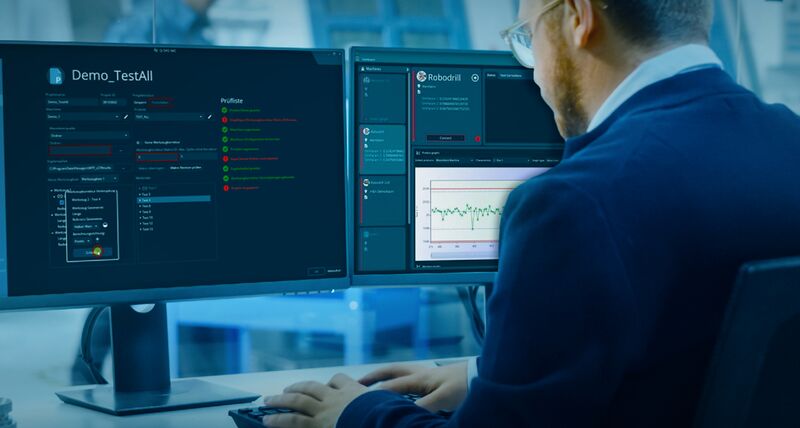Virtual Lifecycle for Manufacturing
Hexagon’s Virtual Lifecycle for Manufacturing solutions provide collaborative engineering workflow management able to leverage digital twins of the physical and virtual worlds to improve design, engineering and manufacturing effectiveness.

Ready to get started?
Virtual Lifecycle for Manufacturing is a collaborative engineering workflow management toolset designed to improve outcomes in engineering applications, bringing together quality, manufacturing, design and engineering.
The solution brings together measured data from the physical world with design and simulation data from the virtual world to connect all the key engineering applications from CAD and CAE, through to CAM and metrology.
With a Virtual Lifecycle for Manufacturing approach, manufacturers can bring more vertically integrated teams to bear on engineering tasks, enabling them to work together more seamlessly with automated workflows during the product development lifecycle. Hexagon’s Virtual Lifecycle for Management solution allows users to obtain, understand and apply data from virtual and physical measurements throughout the product lifecycle, giving a consistent, traceable, transparent and synchronised insight into assembly operations. The solution offers benefits and improvements to engineering and cost efficiency, production planning and manufacturing quality. Virtual Lifecycle for Manufacturing provides a data management framework that automates workflows for different CAE applications including cost estimation, stiffness calculation and multibody dynamics. When measured data from manufacturing is introduced, this framework enables best fit part matching, while parametric simulation models automatically update the models.
Virtual Lifecycle for Manufacturing enables you to define the unique assembly process to maximise assembly quality, for example:
- Measure the exact geometry of components using laser scanners and virtually assemble the parts to understand final flush and gap quality
- Build simulation models to predict deformation and warpage based on the specified welding pattern
- Use optimisation analysis to define the specific assembly operation for this component
-
Features & benefits
- Product design improvement, part feasibility analysis
- Manufacturing process parameters tuning
- Manufacturing process validation and optimisation via simulation
- Quick and early formability studies based on part geometry
- Virtual die tryout based on tooling designs
- Springback compensation
- Detailed virtual tryouts considering the real and physical environment
- Accurate material description and flow
- Prediction of part properties during the manufacturing process chain
- Consider the forming history and its impact in the assembly process
- Reduce engineering changes
- Early visibility of material cost and efficiency
- Design optimisation for cost
- Identify designs not meeting target utilisation
- Automation provides near real-time, synchronised data on complete assembly
- Product design improvement, part feasibility analysis
- Manufacturing process parameters tuning
- Manufacturing process validation and optimisation via simulation
- Quick and early formability studies based on part geometry
- Virtual die tryout based on tooling designs
- Springback compensation
- Detailed virtual tryouts considering the real and physical environment
- Accurate material description and flow
- Prediction of part properties during the manufacturing process chain
- Consider the forming history and its impact in the assembly process
- Reduce engineering changes
- Early visibility of material cost and efficiency
- Design optimisation for cost
- Identify designs not meeting target utilisation
- Automation provides near real-time, synchronised data on complete assembly

